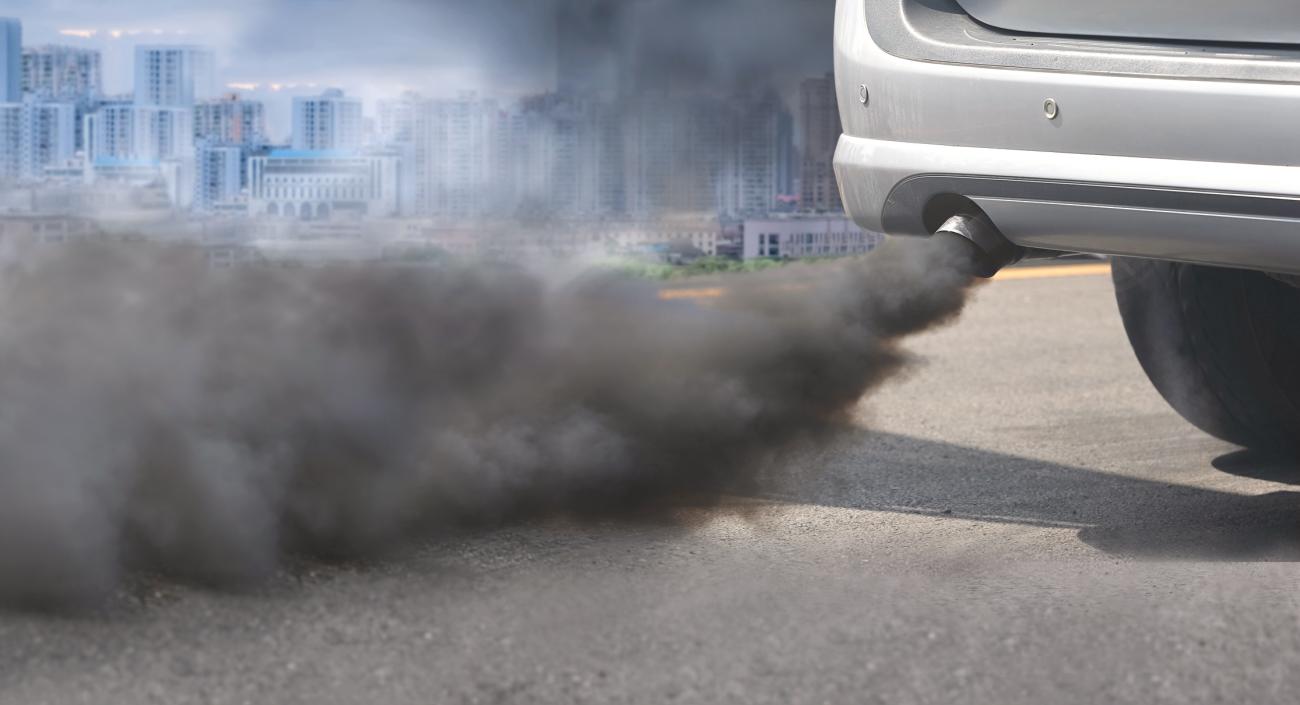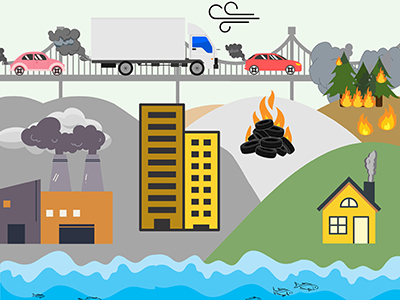
Airway microbiome composition played a role in how study participants’ immune systems responded to diesel exhaust exposure.
Similar to the gut, airways are lined with a thin layer of healthy and sometimes unhealthy bacteria. In a new study led by Vancouver Coastal Health Research Institute researchers Drs. Christopher Carlsten and Min Hyung Ryu, this airway microbial film played a role in how the immune systems of study participants responded to air pollution from diesel exhaust.
“For the first time in humans, we have shown how the airway’s microbiome can alter the airway’s immune response to air pollution.”
“Our findings add to the understanding of how microbes that live in a person’s airway may exacerbate their response to pollutants,” Carlsten says. “There is presently a great deal of interest among researchers to establish a routine, non-invasive test of airway microbiome to inform lung disease diagnosis and treatment, to which our research contributes.”
Carlsten and Ryu’s study tested the impact on the lungs of 25 research participants following two hours of controlled exposure to diesel exhaust — similar to smoking two to three cigarettes or to a single day of exposure to heavy traffic or a diesel-powered ferry. Participants fell into three categories: 1) eight individuals who had never smoked and who did not live with chronic obstructive pulmonary disease (COPD); 2) seven former smokers who did not have COPD; and 3) 10 former smokers with mild to moderate COPD.

COPD occurs following damage to the lungs — for example, from infection, age or long-term smoking. The chronic and often progressive condition leads to ongoing airway inflammation in the form of swelling or irritation, limiting airflow and causing wheezing, coughing up mucus or trouble breathing.
By including individuals with COPD, the research team was able to compare how differences in the airway microbiomes of each participant group corresponded to participants’ immune responses to diesel exhaust exposure.

Photo courtesy of Kevin Lau
“Individuals with COPD tend to have reduced microbial diversity in their lower airways, likely due to a number of microbes dominating their airway ecosystem,” Ryu remarks.
“We know that microbes found in the mucosal layer coating our airway help shape our mucosal immune responses,” Ryu adds. “What remains unclear is how differences in lung microbiome influence immune response specifically to air pollutants.”
Greater microbiome diversity dampened certain cytokines
When we breathe in, the majority of particulate matter is captured by mucus at the back of the throat or in the nose. However, fine particulate matter measuring 2.5 micrometres and smaller in diameter can penetrate deep into lung tissues, causing damage. For comparison, a human hair measures 50-70 micrometres in diameter. Fine particulate matter is found in sources such as diesel exhaust and wildfire smoke.
The body reacts to the damaging effects of fine particulate matter by mounting an immune response. Cytokines — small proteins in the body constantly surveying for antigens, such as viruses, bacteria and pollutants — signal to the immune system to send white blood cells, along with chemicals and proteins in the blood, such as antibodies, to destroy the invading antigens.

Courtesy of COPD Exposed to Air Pollution: A Path to Understand and Protect a Susceptible Population
To isolate how the immune systems of participants reacted to diesel exhaust exposure, the research team focused on several cytokines, including those called Interleukin-6, -7 and -15, which are all drivers of immune response.
Following an analysis of fluid samples collected from participants’ airways, researchers found that participants with lower airway microbiome richness had a heightened immune response in the form of more Interleukin-6, -7 and -15 in the lungs 24 hours after exposure to diesel exhaust compared to participants with higher airway microbiome richness. This result was not dependent on age, the presence of COPD or smoking history. Participants with lower microbial richness also had reduced lung capacity when exhaling into a tube.
“These findings collectively support the notion that lower airway microbial richness may impose susceptibility to the negative health effects of air pollution exposure,” states Ryu.
“Ultimately, we conducted this research to have an impact on policies, and policies often require data from research studies like this one.”
“In the case of this study, we included individuals who are particularly susceptible to air pollutants,” Ryu explains. “Identifying the mechanisms underpinning health threats and measuring their impact on the most susceptible in a population can lead to regulatory changes to protect them from these health threats.”


